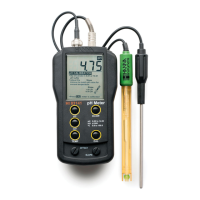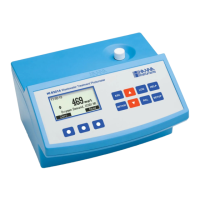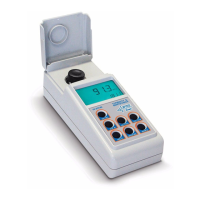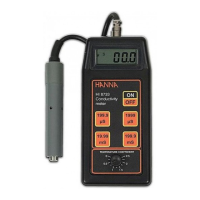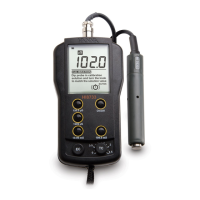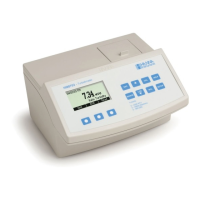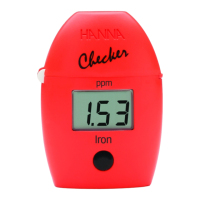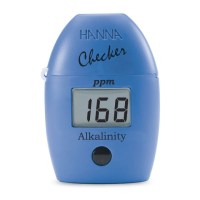20
• If the solution contains some turbidity or color, add a powder packet of active carbon and follow the
procedure described in previous section Colored or Turbid Samples.
• Calculate the dilution factor N:
N = 100/V
Where:
V is the volume of original sample poured in the cylinder, expressed in mL, and 100 is the final volume
in the cylinder, expressed in mL.
• When performing the reading, pay attention to multiply the read value by the dilution factor in order
to obtain the real concentration of the analyte in the original sample:
Example:
Reading = value A
Dilution factor = N
Real value in the original sample = A x N
Note: The methods Potassium Medium Range and Potassium High Range require a dilution of 1:5
(N = 5, V = 20 mL) and 1:10 (N = 10, V = 10 mL) of the sample. As the dilution is always
done, it is already included in the final result and is not necessary to multiply by the dilution factor.

